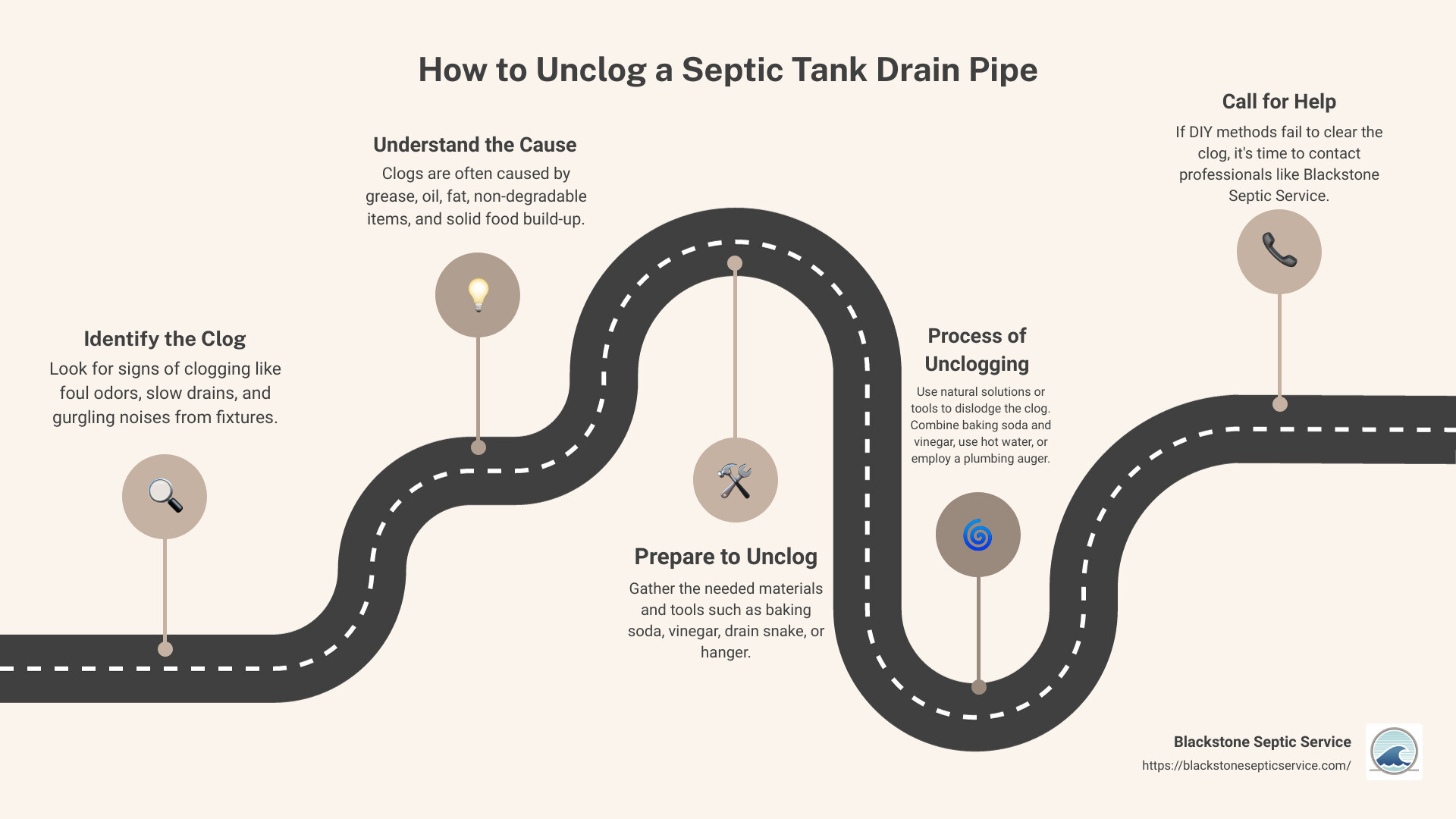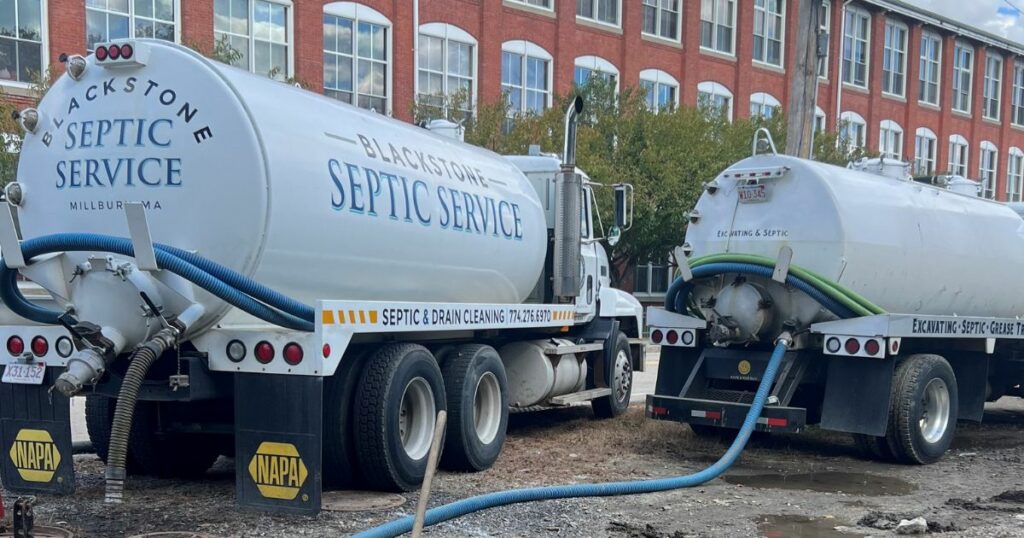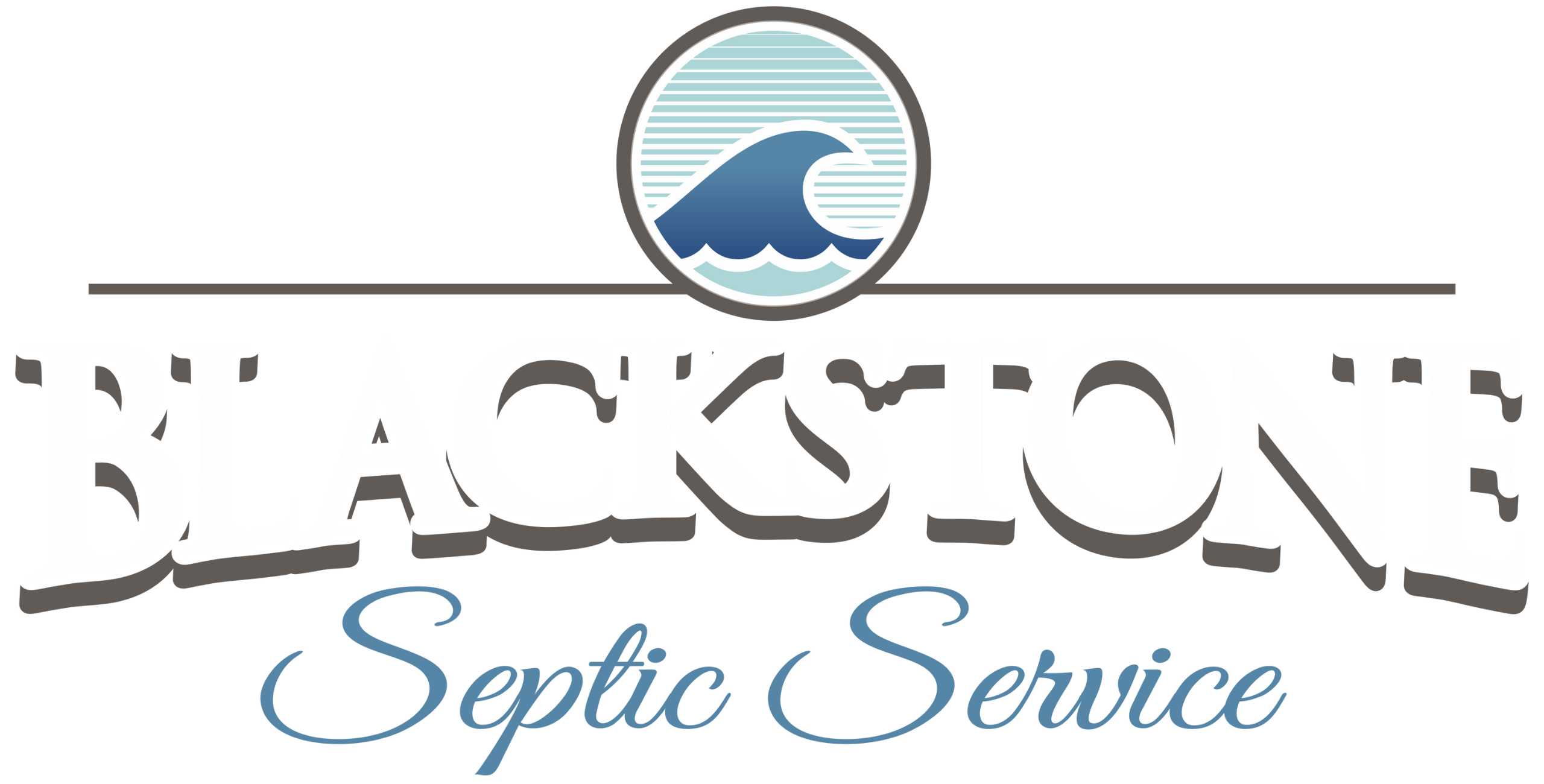Feeling frustrated about the foul odors wafting from your bathroom? Are your drains slow to empty or worse, refusing to drain at all? You understand the importance of a well-maintained septic system but how do you unclog that stubborn septic tank drain pipe?
Your septic tank functions as a crucial part of your home, efficiently processing and disposing of your household waste. However, when all isn’t working as it should, it’s evident with unpleasant smells, continuous gurgling sounds, and inconvenient water pools. This is likely due to a clog in your septic tank drain pipe, requiring immediate attention.
Blackstone Septic Service understands your frustration and confusion. We’re here to bring simplicity to complex situations. In our experience, knowledge is power in combating chaos. Let’s untangle the jargon and explore a hands-on approach to identify and free that bothersome clog, paced at your comfort level.
Overview of How to Unclog A Septic Tank Drain Pipe:
Here’s a snapshot of the steps for how to unclog a septic tank drain pipe for those seeking immediate clarity:
- Identify the Clog: Lookout for foul odours, slow drains, gurgling noises.
- Understand the Cause: Usually grease, oil, fat, other solid food build-up or non-degradable items.
- Prepare to Unclog: Gather necessary materials like baking soda, vinegar or tools like a drain snake or hanger.
- Process of Unclogging: Using baking soda and vinegar, hot water, a plumbing auger, or a hanger, attempt to unclog the drain.
- When to call for help: If DIY doesn’t fix the problem, call a master plumber or us, Blackstone Septic Service!

The following article breaks down this common yet confounding problem into easy-to-understand steps. By the end, not only will you know more about your septic tank, but you’ll also have a clear understanding of how to tackle that clog. Stick around, and let’s dive into septic tank maintenance together.
Table of Contents
Step 1: Identifying the Signs of a Clogged Septic Tank Drain Pipe

Just like any machine, your septic system will show signs when it’s not functioning as it should. When it comes to a clogged septic tank drain pipe, here are the tell-tale signs you should look out for:
Slow Draining Sinks, Tubs, and Toilets
One of the most noticeable signs of a clogged septic tank drain pipe is slow draining in your sinks, tubs, and toilets. If water is pooling up before slowly draining away, it’s a clear indicator that your septic system may have a clog.
Foul Odors Around the Property
As waste and water back up due to a clog, foul odors can start to seep out of your drains and toilets. If you notice an unpleasant smell around your property, it could be due to a clogged drain pipe in your septic system.
Gurgling Noises from Plumbing Fixtures
Another sign to watch out for is gurgling noises from your plumbing fixtures. When there’s a disruption in your plumbing, such as a clog, it can cause your sinks, toilets, and washing machine to make gurgling or trickling sounds.
Standing Water or Wet Spots in the Yard
Last but not least, if you see water backing up into your yard or wet spots around the area where your septic tank is buried, it’s a likely sign that you have a clogged septic tank drain pipe.
By being vigilant and taking note of these signs, you can catch a clog early before it escalates into a more serious problem. We at Blackstone Septic Service are always ready to assist with your septic system needs. If you’re experiencing any of these signs, don’t hesitate to request our service. Our team of experienced professionals will provide fast and reliable solutions to ensure your septic system is functioning as it should.
Step 2: Understanding the Causes of Septic Tank Clogs
Before we dive into how to unclog a septic tank drain pipe, it’s crucial to understand the common culprits behind these blockages. By identifying the causes, you can prevent them from recurring in the future.
The Impact of Fats, Oils, and Grease (FOGs)
The main villains behind a clogged septic tank drain pipe are FOGs — fats, oils, and grease. When these substances are poured down the drain, they solidify and create a hard crust at the top of the wastewater in the tank. This crust can prevent the normal flow of waste, leading to backups and sluggish drains.
To avoid this, it’s best to dispose of FOGs in the trash rather than down the drain. If your drain is already affected, products such as Digesta can cut through partial septic tank blockages and keep your pipes clean and clear.
The Problem with Non-Flushable Items
Another common cause of septic tank clogs is flushing non-biodegradable items down the drain or toilet. This includes items like wet wipes, feminine products, and even certain types of toilet paper that don’t break down easily.
These items can block pipes and disrupt the normal functioning of your septic system. As a rule of thumb, only the three Ps — pee, poop and paper (toilet paper, that is) — should be flushed.
The Role of Bacteria in Septic Tanks
Believe it or not, bacteria are your septic tank’s best friend! These helpful microorganisms feed on the organic waste in your septic tank and break it down into simpler compounds. This process allows purer treated water to safely drain into the local environment through your soakaway.
However, excessive use of bleaches and chemical cleaners can kill off these beneficial bacteria, leading to a buildup of waste and potential clogs. It’s crucial to regularly add a bacterial septic tank treatment like Muck Munchers and avoid using harsh chemicals to ensure a healthy balance in your septic system.
Understanding these causes is the first step to learning how to unclog a septic tank drain pipe. The next step involves gathering the right tools and taking the necessary safety precautions before starting the unclogging process. But remember, if the task seems too daunting or the clog too severe, don’t hesitate to reach out to us at Blackstone Septic Service. Our team of experienced professionals is always ready to help!
Step 3: Preparing to Unclog Your Septic Tank Drain Pipe
Before diving into the task of unclogging your septic tank drain pipe, it’s crucial to properly prepare. This includes gathering the necessary tools and taking important safety precautions to protect yourself from potential hazards.
Gathering the Necessary Tools and Materials
You’ll need a few essential tools and materials to tackle this job effectively. Here’s what you should have on hand for clearing a clogged septic line:
- Gas mask: Septic tanks can release powerful fumes that can cause discomfort or even unconsciousness. A proper gas mask is a must-have for your safety.
- Safety goggles: These will protect your eyes from any potential splashes.
- Rubber gloves: These will keep your hands clean and safe from harmful bacteria.
- Pry bar: This will help you remove the septic tank cover.
- Wooden pole or steel rod: You’ll use this to push through the clog in the drain pipe.
- Gallon bucket: Needed for your sanitizing solution.
- Bleach: This will be mixed with water to create a solution for sanitizing your tools after use.
Safety Precautions to Take When Working with Septic Systems
Working with septic systems can be a messy and potentially hazardous job. Here are some safety precautions to consider when clearing septic lines:
- Wear protective clothing: Besides a gas mask, safety goggles, and rubber gloves, be sure to wear durable clothing that covers your arms and legs to protect yourself from splashes.
- Avoid leaning over the tank: Never lean over or attempt to climb inside the tank, as the fumes can be harmful. Always maintain a safe distance.
- Work with a partner: If possible, have someone nearby while you work on the tank. They can assist you if needed and ensure that all safety precautions are being followed.
- Sanitize your tools: After completing the task, clean all tools used with a bleach solution. This will help prevent the spread of bacteria.
Following these steps should prepare you for unclogging your septic tank drain pipe. However, remember that if the task seems too daunting or the clog too severe, you don’t have to do it alone. We at Blackstone Septic Service are always ready to assist you. Our team of experienced professionals can handle any septic system issue, ensuring your system is functioning optimally and safely.
Step 4: The Process of Unclogging Your Septic Tank Drain Pipe
At this stage, you’ve identified the signs, understood the causes, and prepared yourself to unclog your septic tank drain pipe. The drain cleaning process involves using natural solutions, mechanical tools, and knowing when to call a professional plumber.
Using Natural Drain Cleaner Solutions: Hot Water, Vinegar, and Baking Soda
We always recommend starting with the most non-invasive approach. A simple and safe method to attempt unclogging your septic tank drain pipe is by using a mixture of hot water, vinegar, and baking soda. This method is safe for your septic system and does not disrupt the microbial balance required for optimal functioning.
First, pour ⅓ cup of baking soda into the affected drain, followed by ⅓ cup of vinegar. The mixture will create a fizzing action that helps break down the clog. Allow this to work for about an hour. After this time, follow up with a generous amount of hot water. The hot water helps to further break down the obstruction and flush it through the system.
Using a Plumbing Auger or Drain Snake
If the natural solution doesn’t clear the clog, it’s time to bring in some mechanical help. A plumbing auger, also known as a drain snake, can be handy in this situation. This tool can reach far down your drain pipe and dislodge stubborn clogs. If you’re comfortable handling such a tool, insert it into the drain until it hits the obstruction. Twist and turn the auger to break up the clog, then withdraw it.
When to Call a Professional: Blackstone Septic Service
While these DIY solutions can be effective, they are not always enough to solve the problem. Some clogs are simply too stubborn, and some problems may be more complex than they seem. If you’ve tried the above methods and your drain is still clogged, it’s time to call in the professionals.
At Blackstone Septic Service, we have the expertise and equipment to handle any septic system issue, no matter how complex. We understand how important it is to have a fully functioning septic system, and we’re committed to providing fast and effective solutions. So don’t hesitate to reach out to us when you need assistance with how to unclog a septic tank drain pipe in your home.
Step 5: Preventing Future Septic Tank Clogs
After successfully unclogging your septic tank drain pipe, take preventive measures to avoid future blockages. At Blackstone Septic Service, we believe the prevention of a clogged tank is always better than cure. Let’s explore some practical steps you can take.
Regular Septic Tank Pumping and Maintenance
Regularly pumping your septic tank is a crucial part of maintaining its health and efficiency. The Environmental Protection Agency recommends pumping your septic tank every two to five years, depending on the tank’s capacity and your household demands. We at Blackstone Septic Service can help you set up a regular pumping schedule to prevent your tank from reaching its full capacity, which can cause unnecessary issues and blockages.
Using Septic-Safe Drain Cleaners
When dealing with drain clogs, it’s tempting to reach for powerful chemical cleaners. However, these could potentially harm your septic system’s natural bacteria, disrupting the waste breakdown process. Instead, consider using septic-safe cleaners, such as a mixture of white vinegar and baking soda. This natural solution works wonders in loosening up deep clogs and blockages without damaging your septic system.
Proper Waste Disposal Practices
Adopting proper waste disposal practices is key to preventing septic tank clogs. Your septic system is not designed to handle anything other than human waste and toilet paper. Avoid flushing wipes, feminine products, or any other non-flushable items, as they can block pipes. Also, consider disposing of kitchen waste in the trash rather than using a garbage disposal.
At Blackstone Septic Service, we also suggest avoiding the use of bleach as much as possible, as it kills the much-needed bacteria inside your tank. If possible, use toilet paper labeled “septic system safe” or “biodegradable” to help maintain the longevity of your system.
We understand that maintaining a septic system can be a daunting task. But remember, the efforts you put into preventative care and maintenance can save you from dealing with clogged drains and expensive repairs in the future. For any concerns or assistance, don’t hesitate to contact us at Blackstone Septic Service. We’re always here to help with all your septic system needs.
Conclusion: The Importance of Regular Septic System Maintenance

Proper upkeep of your septic system is crucial for the long-term health of your property. Regular maintenance helps to prevent blockages, keeps your septic system functioning optimally, and ultimately safeguards your home’s sanitation and your family’s health.
It’s not just about knowing how to unclog a septic tank drain pipe; it’s about adopting good practices that prevent clogs in the first place. This includes avoiding flushing non-degradable items, limiting the use of chemicals, and being mindful of the amount of water you’re flushing through your septic system.
How Blackstone Septic Service Can Help
At Blackstone Septic Service, we understand that maintaining a septic system can be challenging for homeowners. That’s why we’re committed to providing exceptional septic services in Central MA and surrounding areas of the Worcester County Area. Our experienced and reliable team is always ready to assist you with all your septic system needs, whether it’s regular maintenance, emergency septic services, or providing advice on septic system care.
Our services don’t just stop at unclogging your septic tank drain pipe. We also offer grease trap cleaning and excavation services as part of our comprehensive septic solutions.
Prevention is always better than cure. By choosing Blackstone Septic Service, you’re choosing a septic professional who cares about the longevity of your septic system. Contact us today, and let’s keep your septic system running smoothly and efficiently.
For more information on how to keep your septic system in top shape, check out our resources page for useful tips and advice.
Our Content
Our experienced septic tank specialists have carefully reviewed and edited all of the content to ensure that it meets our high standards for quality and accuracy. At Blackstone Septic Service, our mission is to provide unparalleled expertise and service excellence in the realm of septic system care. With a dedicated team of professionals committed to delivering top-tier solutions, we specialize in comprehensive services encompassing everything from routine maintenance like septic tank pumping and cleaning to intricate repairs, thorough inspections, and new system installations. Customer satisfaction is at the core of our operations, and we pride ourselves on our prompt, reliable, and customer-centric approach. Blackstone Septic Service is a family owned company with highly trained technicians, with over 75 years of experience in septic tanks.



